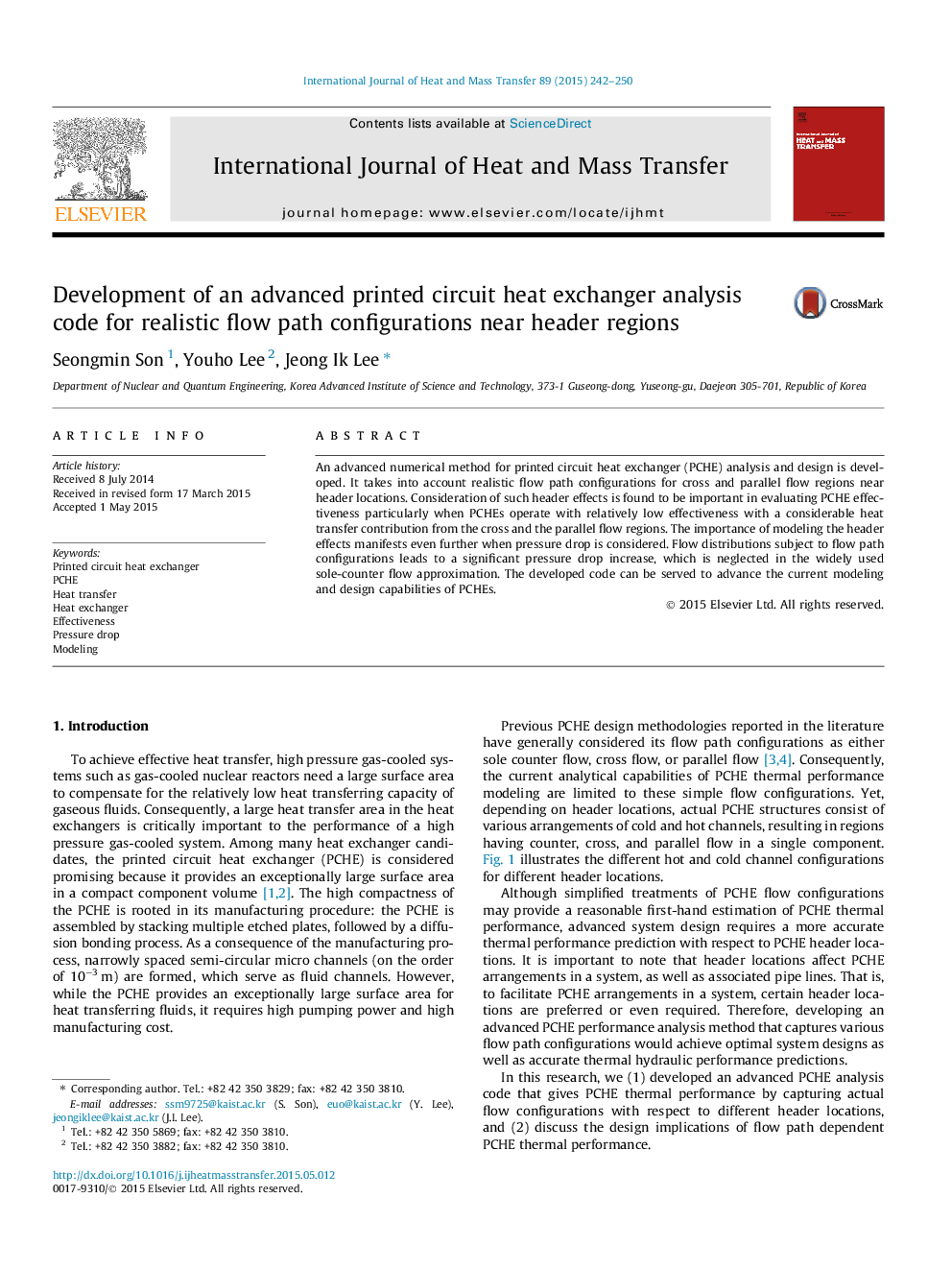| Article ID | Journal | Published Year | Pages | File Type |
|---|---|---|---|---|
| 7056539 | International Journal of Heat and Mass Transfer | 2015 | 9 Pages |
Abstract
An advanced numerical method for printed circuit heat exchanger (PCHE) analysis and design is developed. It takes into account realistic flow path configurations for cross and parallel flow regions near header locations. Consideration of such header effects is found to be important in evaluating PCHE effectiveness particularly when PCHEs operate with relatively low effectiveness with a considerable heat transfer contribution from the cross and the parallel flow regions. The importance of modeling the header effects manifests even further when pressure drop is considered. Flow distributions subject to flow path configurations leads to a significant pressure drop increase, which is neglected in the widely used sole-counter flow approximation. The developed code can be served to advance the current modeling and design capabilities of PCHEs.
Keywords
Related Topics
Physical Sciences and Engineering
Chemical Engineering
Fluid Flow and Transfer Processes
Authors
Seongmin Son, Youho Lee, Jeong Ik Lee,
